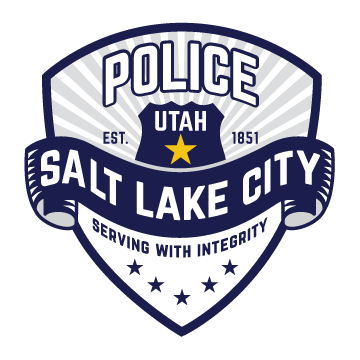In Memoriam: Detective James W. Cawley (2003)
March 29, 2014SLCPD Reminds Public of Conference Weekend Parking, Traffic Congestion
April 4, 2014Burbank discusses signs of gang activity, options for parents and neighborhoods
SALT LAKE CITY — In his April Chief’s Message, Police Chief Chris Burbank talks with Det. Matt Voorhees about gang activity in Salt Lake City and what the public or parents can do if they suspect gang activity in the neighborhood or the home.
Burbank starts by asking Voorhees what the average resident can do “if there’s a problem house just down the street from me. How do I know if it’s a gang problem? Who do I contact or how do I take care of this problem that I’ve got in my neighborhood?”
“We do have our own tip line, 799-GANG, but there are also other avenues that we approach,” Voorhees explains, “such as our Community Intelligence Unit, which … [includes] a lot of our former gang unit detectives. We’ll reach out to them, and they will also reach out to us, [when] they go and meet with the community members at a root base and … deal with problems that wouldn’t necessarily reach us. In turn, the CIU unit will let us know what’s going on, and then we’ll facilitate an action on that house or in that neighborhood to try to combat that gang crime.”
According to SLCPD’s Gang Unit, gangs are multi-racial, much less territorial, and highly mobile, committing crimes in many areas. As local examples of what to look for roll by on the screen, Burbank asks, “how do I know if my children are involved in gangs? What are some of the signs, what should I be looking for, and should I be concerned?”
“We get that question a lot,” Voorhees says. “What we tend to look for, and what parents should look for themselves is, is who they’re hanging out with. Be aware of who your kids are associating with and what kind of crowds they’re with.”
Others signs of potential gang activity include:
- recurring color theme in clothing, from shoe laces to shorts/pants to shirt to hats,
- illegible writing or tagging in notebooks or on walls,
- backward or crossed-out lettering,
- and tattoos.
“Clothing is a big indicator for us,” Voorhees continues, “…whether they [are] in elementary
schools or even in junior high schools, they’re being courted into these gangs and they’re kind of being groomed to become a gang member. They [parents] will start to see those colors, and they [children] will start to proudly try to show those colors.
If gang activity is found, parents do have options. Voorhees said the Salt Lake City Gang Unit works with families to find diversionary programs, ranging from sports and church to education and scouting.
“Our unit, we go out and talk to the community. We’ll go to … different community meetings and teach them about gangs, what to recognize and what to see,” Voorhees notes. “As our association with parents increases, then their awareness of gangs also increases.”
SLCPD’s Gang Unit is the lead agency in the local Safe Streets Task Force, a collaboration of 12 law enforcement agencies to investigate, suppress and prevent gang crime in the Salt Lake Valley. According to the FBI, these task forces pursue violent gangs through sustained, proactive, coordinated investigations to obtain prosecutions under the U.S. Code, Titles 18 and 21, including violations such as racketeering, drug conspiracy, and firearms violations.[i]
While gang activity in Salt Lake City isn’t on the level of larger metropolitan cities, Voorhees says, “we do have [similar] problems. Maybe not as much of a [gang] population, but still the same amount of problems, to include the drive-by shootings, homicides, down to simple assaults.”
Like the Mafia, some local gang activity reaches the level of organized crime, he tells Burbank: “drug dealing tends to be the higher, more organized areas [of gang crime], which cross state lines and essentially cross intercontinental lines.”
“And that’s the advantage that we have with Safe Streets Task Force,” Burbank notes, “because we do have federal agencies that participate with us. So we have a little broader reach, if you will, as far as what we can cover and how we can actually do some enforcement in the area.”
Watch the full video online at www.slcpd.com or YouTube.com/slcpd.
About the “Chief’s Message”
Chief Burbank issues a monthly video message to help the public reduce its exposure to, or mitigate the effects of, crime, as well as spotlight different parts of the city’s public safety team. All “Chief’s Messages” are archived on the newsroom page of www.slcpd.com and the “Chief’s Message” playlist of http://www.youtube.com/slcpd. To recommend a topic to Chief Burbank, please send an email to: askthechief@slcgov.com.


